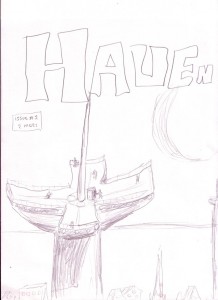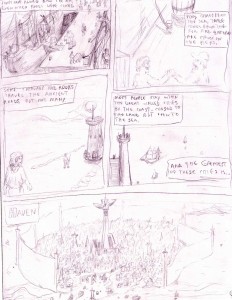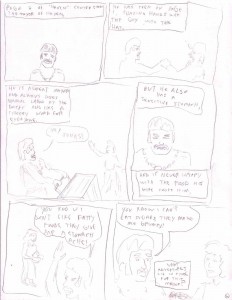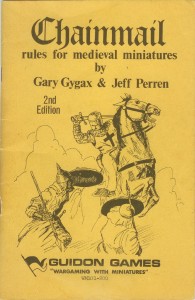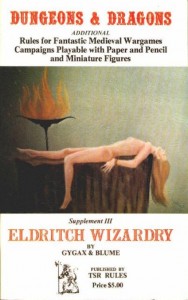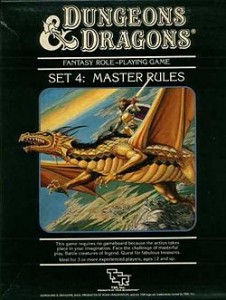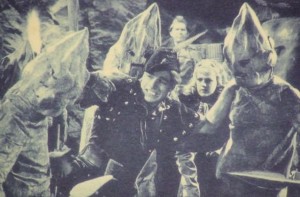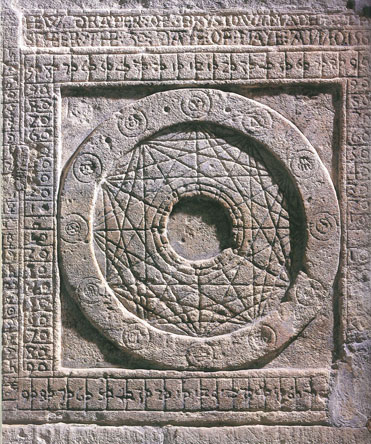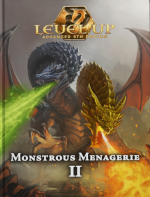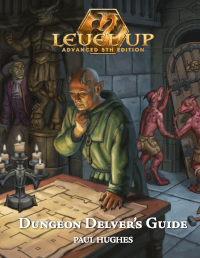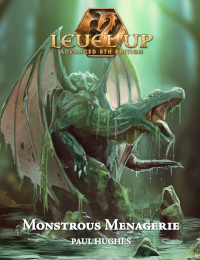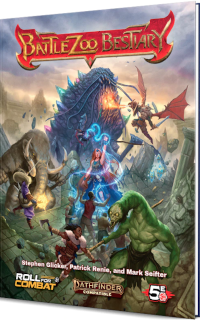As a late-edition player, I’m finding a lot to like in OD&D, but there’s also a lot that mystifies me. The cursed items from the Greyhawk Supplement are solidly in the latter category. Finding some of these items is the narrative equivalent to the DM saying “You have a heart attack and die.”
Consider these items:
Horn of Collapsing: An instrument which seems to be a Horn of Blasting, but when it is winded it will cause the ceiling immediately above the user to collapse upon him, causing from 6-60 points of damage. If blown in the open it causes a rain of rocks to fall from the sky upon its user, and from 5-30 of such missiles will shower down, doing from 1-3 points damage each.
This one is not only a literal “rocks fall you die” item, it has annoying mechanics. If you’re inside, you take 6d10 damage. Hilarious. If you’re outside, though, the DM is supposed to roll 5d6, add that up, and then roll THAT NUMBER of d6 (an average of 18 dice), dividing each die total by two? Does that curve really vary meaningfully from, say, 6d10, which does about the same average damage?
Necklace of Strangulation: A device which is identical to a Necklace of Missiles, but when placed about the neck will strangle and kill its wearer in 2-5 turns, it requires a Limited Wish or Wish to remove it.
Oh, look, it’s not just an insta-death item because it can be reversed with Wish and Limited Wish! Well, guess what: so can any death. (In the description of the Wish spell: “Wishes that unfortunate adventures had never happened should be granted.”) Might as well just come out and say the necklace “immediately kills the wearer, no save.”
Poisonous Cloak: A cloak indistinguishable from others which are magical. When it is put on it immediately kills its wearer by poison. No saving throw is possible.
There you go. Honesty!
Scarab of Death: A scarab which appears to be any of the other types, but when it is held in the hand for a full turn, or when it is placed in a pack, a bag, or some other place near a person’s body it turns to a horrible burrowing monster which digs directly to the person’s heart and kills him.
DM: You find a magical scarab.
Player: I’m not using any magic items until I’m back in town, standing next to a cleric with Water Breathing, Neutralize Poison, Cure Disease, Remove Curse, Wish, and Limited Wish! Making sure not to touch it directly, I’ll wrap the scarab in several layers of cloth and throw it in my backpack.
DM: It turns into a horrible burrowing monster which digs directly to your heart and kills you. No save.
Player: …
There are many more cursed items; the schtick is that every type of magic item (scarab, horn, etc) has a cursed item, so you never know for sure if a magic item is going to kill you. In fact, sometimes the deadly version of the item is much more common than the helpful one. According to the random treasure tables, more than half of all bowls are Bowls of Watery Death. 75% of all carpets are of Smothering. Half of necklaces are Necklaces of Strangulation.
What recourse do the players have here? In Grayhawk, the Identify spell hadn’t been invented yet. I guess spellcasters could cast the 5th level spells Commune and Contact Higher Plane every time they found a magic item, but I’d think the gods would get sick of that. (Anyway, Contact Higher Plane has a good chance to drive the caster insane.) And Raise Dead is a 5th level spell anyway, so might as well just wait and cast that instead.
Why not skip cursed items, and just say this: “Whenever someone gets a new magic item, flip a coin. If it’s tails, they die! There’s nothing they can do to lower this risk!”
I get that death is common in OD&D. I get that sometimes the player dies through no fault of his or her own. But I don’t see how it’s fun for the DM to place an item, knowing that there’s a 100% chance it will kill a character. I just can’t get it out of my spoiled, 4e, everything-is-padded head that PC death should involve, at minimum, one of a) an attack roll, b) a saving throw, c) a bad decision, or d) a missed clue.
Here’s my challenge: Can anyone contribute an anecdote about a time they used one of these insta-death items, and it was fun?
Next week: OD&D cursed items that are not that bad!
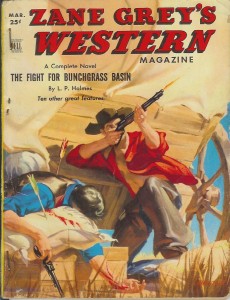 Re-reading Burroughs’ A Princess of Mars recently, I was struck with how explicitly it’s a Western. John Carter fights savages on dead sea bottoms, gropes through caverns looking for treasure, and fights weird monsters. And that’s all before he goes to Mars. The first episode of the novel is a shoot-em-up Arizona adventure which encapsulates all the rest of the book. Mars is Arizona writ large, with bigger and drier deserts, more savage natives, more accurate guns, faster horses, and more faithful dogs. In structure, the book is a lot like the Wizard of Oz movie: a reasonably plausible day, followed by a fantasy dream sequence version of the same events.
Re-reading Burroughs’ A Princess of Mars recently, I was struck with how explicitly it’s a Western. John Carter fights savages on dead sea bottoms, gropes through caverns looking for treasure, and fights weird monsters. And that’s all before he goes to Mars. The first episode of the novel is a shoot-em-up Arizona adventure which encapsulates all the rest of the book. Mars is Arizona writ large, with bigger and drier deserts, more savage natives, more accurate guns, faster horses, and more faithful dogs. In structure, the book is a lot like the Wizard of Oz movie: a reasonably plausible day, followed by a fantasy dream sequence version of the same events. 
